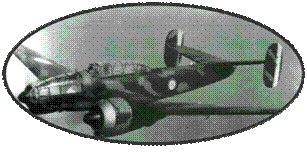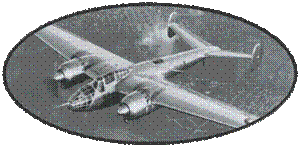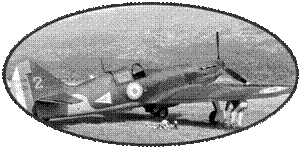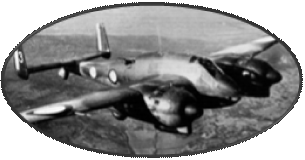In 1934, the Air Force was
looking for a plane to equip its transport units. She first turns
naturally to existing Air France commercial aircraft or under study,
and is considering an order of 12 Potez 62 and 12 Bloch 220. The
company Bloch declined the request, but the company Potez proposes
a modified version of its Potez 621 : The Potez 650. It is powered
by Hispano-Suiza 12Xgrs, and its structure is reinforced to support
heavier loads. It has an extended loading door and various specific
equipment. At the end of 1935, the concept was validated via an
interior layout model and 10 appliances were ordered. The first
flight of the Potez 650 No1 took place on June 2, 1936 or December
5, 1936 ... The archives having disappeared during the war, the
actual date is uncertain. The CEMA (Air Equipment Testing Center)
of the Air Force takes charge of the aircraft February 17, 1937.
The tests being satisfactory, four Potez 650 are delivered in April
1937, 5 in May, 1 in July, 1 in September (2nd series), and 4 in
October. This second series of 5 devices has been formalized by
the 709/7 market.
The Potez 650 mainly equip
the I/601 and I/602 Transport Squadrons, and are used by the Air
Infantry Groups GIA 601 and GIA 602, the first French parachute
units. Two aircraft will be assigned to ministerial transport (No1
and 6), and another is given to the CIP (Paratrooper Training Center)
based in Avignon. I/602 is based in AFN, on the grounds of Algiers
Maison-Blanche, while the I/601 is based in Reims. He will join
I/602 in AFN at the end of February 1939.
At the declaration of war,
the I/601 joined the metropolis, while the I / 602 remains stationed
in Algeria. Finally, French parachutists will not perform any airborne
mission. The Potez 650 will be used during the short campaign of
France, to transport men and equipment to the Armistice, date from
which all flights were prohibited.
It is only after Mers El Kebir that this ban is lifted. A new transport
unit is created, the Transport Group II / 15 equipped with quite
varied equipment, and it receives in particular 6 Potez 650. Among
the important missions, we can note the transport of 60 tons of
gold evacuated by the Bank of Belgium to the AFN to remove them
from the Germans.
At the end of May 1941, faced with the risk of British attack on
the Levant protectorates (Lebanon and Syria), GT II/15 organized
the transfer of GC III/6 from Algiers to Syria via Italy (Brindisi),
Greece and Rhodes (at the time Italian possession).
During this short campaign
in Syria, the Potez 650 are made to carry out an air bridge between
North Africa and Syria, to transport equipment and men: 59 connections
will be made in just over a month
After the landing of the
allies in AFN, 3 Potez 650 GT II/15, under the colors of Free French,
will be used for a time until wear or blockage on the ground for
lack of parts.
The last flight of the Potez
650 No. 5 seems to have taken place on July 18, 1945, with a connection
Beirut - Rayack.
The Potez 651 Romanians:
In 1937, Romania wants to
accelerate the modernization of its military Aviaition, and wants
to strengthen its bombing force for which it has already ordered
a dozen Potez 543. But the French Air Force is in the same process
of remilitarization, and the Potez 543 leaving Potez factories are
reserved for him. So Potez proposes the Potez 651 as an alternative.
This is an adaptation of the Potez 650 bomber night, but without
defensive armament. Despite the reliability problems encountered
on the first French copies, these devices retain Gnome-Rhone 14N
star engines. This engine, built under license in Romania, however,
will have an unrelenting reliability, this confirming the quality
problems related to the manufacture on the French site ... In 1937,
Romania orders 6 copies and the first aircraft is delivered in flight
late 1937 The next ones to be assembled in Rumania from 1938. It
seems however that only 4 devices were delivered.
The Potez 651 are assigned
to 83 Squadron of the 2nd Night Bomber Group. But they are quickly
removed from front-line units and are assigned to transport and
evacuation missions within the 132nd Independent Transport and Liaison
Squadron. The unit will be dissolved in January 1941 and the Potez
transferred to Grupul Aerotransport. They will be used for various
transports during the invasion of the Soviet Union in June 1941,
before being relegated to stains of evacuation of wounded or piloting
of twin engines. Note that one of the Potez 651 is integrated into
a health unit entirely composed of female staff, including pilots.
On May 29, 1944, there are still 3 Potez 651 their trace is lost
in the fighting in late 1944 against the former German ally, after
the change of edge of Romania on August 23, 1944.













